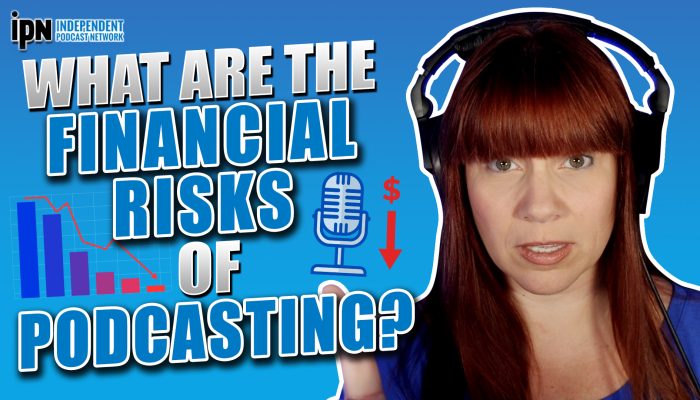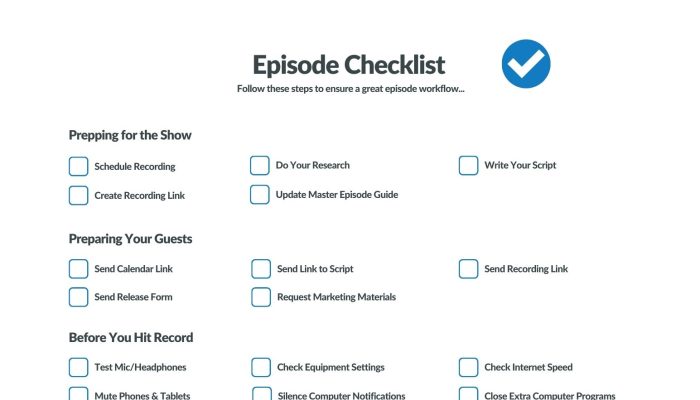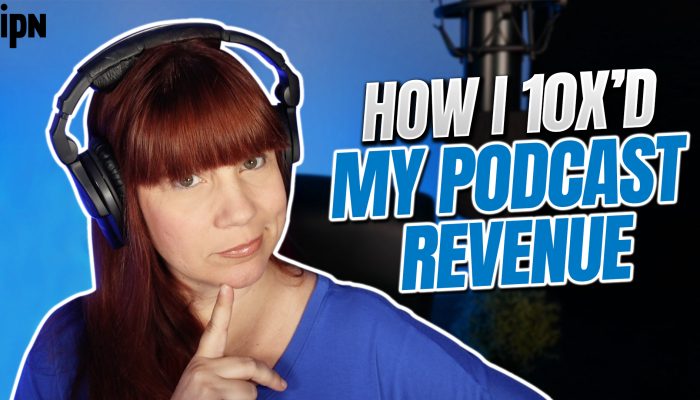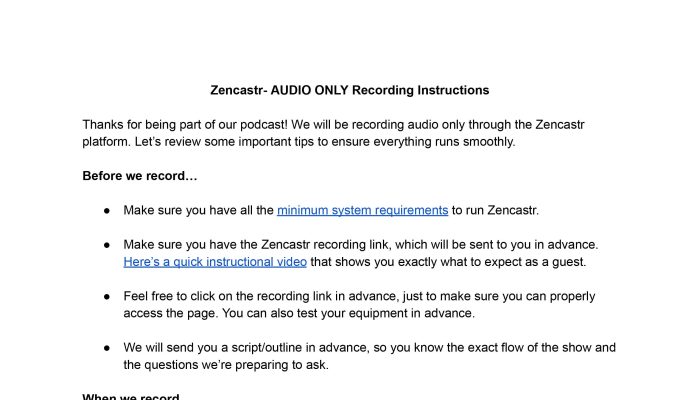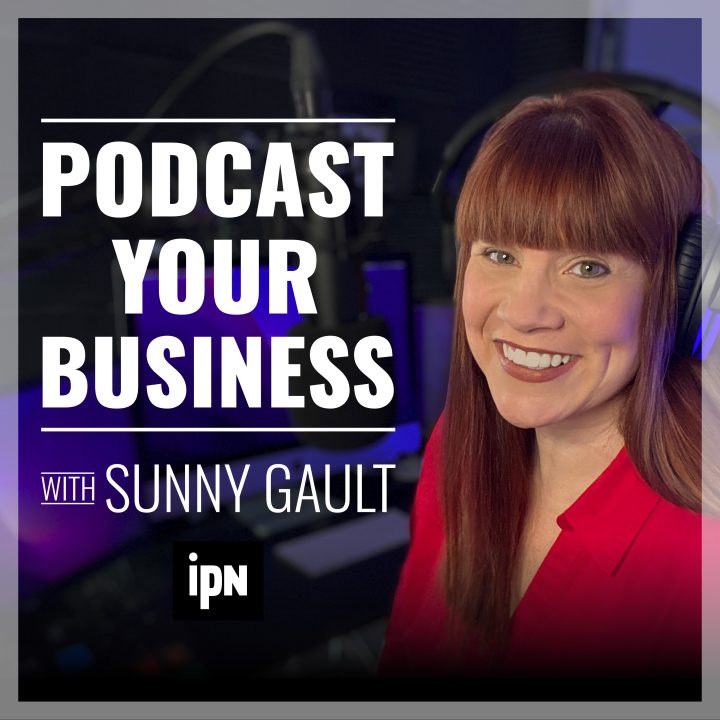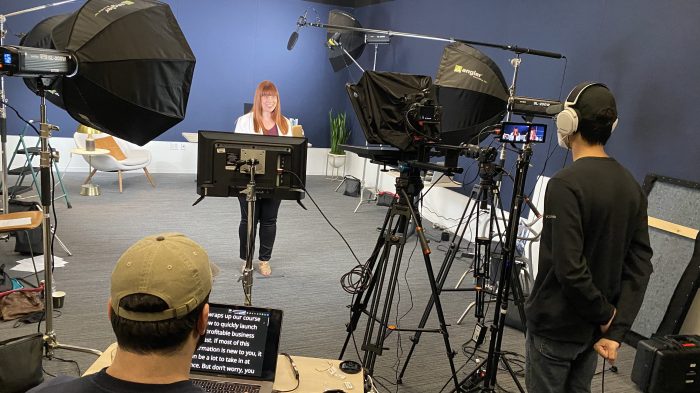When it comes to podcasting, keeping your audience hooked is everything. Sure, getting people to click “play” is important, but if they’re dropping off halfway through your episodes (or worse, in the first few minutes), it’s hard to build momentum. But, just because your audience isn’t sticking with you throughout your episode doesn’t mean your content is bad. You might just need to make a few minor adjustments to make your content more engaging.

Identifying the Problem Using Your Retention Data
Before you can fix audience retention, you need to figure out where things are going wrong. If your listeners are tuning out early or not coming back for future episodes, that’s a sign you’ve got a retention problem.
Check Your Analytics
Your podcast hosting platform is your best friend here. Tools like Apple Podcasts Connect, Spotify for Podcasters, and other analytics dashboards can show you key data, such as:
- Drop-off rates: Where listeners stop listening during an episode.
- Completion rates: How many people make it to the end of your episodes.
- Repeat listeners: Are people coming back for more, or are they one-and-done?
If you notice a trend in your podcast’s analytics—like listeners dropping off in the first five minutes—it’s a clear signal that your intro might not be grabbing their attention.
Look for Red Flags
Here are some common signs of a retention problem:
- High early drop-off rates: If most listeners are gone within the first few minutes, your intro might need work.
- Inconsistent listenership: If numbers vary wildly from episode to episode, your content might not be delivering on what your audience expects.
- Low episode completion rates: If only a small percentage of listeners finish your episodes, they may be too long or not engaging enough.
Listen to Your Listeners
Sometimes your audience will tell you exactly what’s wrong—if you’re willing to listen. Check reviews, social media comments, or emails for patterns. Are people saying your episodes are too long? Too unfocused? Hard to hear? This feedback can give you valuable clues about what’s driving people away.
Tip #1: Open Strong
The first minute of your podcast is make-or-break. Many listeners decide whether to keep listening or hit “next” based on your hook alone, so it’s crucial to start strong.
How to Nail the Hook:
- Get straight to the point: Avoid long-winded intros or irrelevant small talk. Tell your audience exactly what they’ll gain by sticking around.
- Use a compelling opening: Start with a thought-provoking question, an intriguing statistic, or a quick story to pique curiosity.
- Preview the episode: Give listeners a clear roadmap of what they can expect—and why they should care.
Example:
Instead of saying, “Hey, welcome to the show. We’re going to talk about some interesting stuff today,” try:
“Did you know that 80% of podcasts fail to keep their audience past the first 5 minutes? Today, we’ll reveal how to make sure you’re in the top 20%—and it’s easier than you think.”
Tip #2: Pay Attention to Your Pacing and Stay Focused
Nothing loses listeners faster than rambling or irrelevant tangents. Each episode should feel like a carefully curated experience, not a casual chat with no direction. So, structure your podcasts with engagement in mind.
How to Stay on Track:
- Plan ahead: Use an outline or script to guide your episode and ensure you stay focused.
- Stick to one main topic: Trying to cover too much in one episode can overwhelm your audience. Dive deep into one idea instead of skimming the surface of many.
- Cut the fluff: During editing, remove filler words, long pauses, or repetitive content.
Pro Tip: Always ask yourself, “What’s in it for my audience?” If a segment doesn’t provide value, cut it.
Tip #3: Maintain a Consistent Format Across Episodes
Listeners love structure. A predictable format helps them know what to expect, which builds trust and keeps them coming back. While variety is great, too much unpredictability can make your show feel scattered.
How to Build a Winning Format:
- Start with a strong intro that sets the tone and previews the episode.
- Include recurring segments, like listener Q&A, quick tips, or guest interviews.
- End with a clear and memorable conclusion (more on this below).
Example Format:
- Intro: Hook and episode preview (1-2 minutes).
- Main content: Deliver the meat of the episode, broken into clear sections (15-20 minutes).
- Wrap-up: Key takeaways, call-to-action, and teaser for the next episode (2-3 minutes).

Tip #4: Improve Your Audio Quality and Production
Even the best content can’t save poor audio quality. If your podcast sounds unprofessional—think background noise, inconsistent volume, or muffled voices—listeners won’t stick around. In most cases though, it’s easy to improve your audio quality.
How to Improve Audio Quality:
- Invest in a good microphone (you don’t need to break the bank—there are excellent budget options).
- Record in a quiet space to minimize background noise.
- Use editing software to clean up your audio, balance volume levels, and remove distractions.
Quick Fix: Test your episodes by listening with headphones. If something sounds off, chances are your audience will notice too.
Tip #5: Leverage Engagement Techniques
Retention isn’t just about your content—it’s about building a connection with your listeners. When you engage and interact with your audience, they feel involved and become more likely to stick around for your entire episode.
How to Foster Engagement:
- Ask for listener input: Invite your audience to send in questions, topic suggestions, or feedback—and feature them in episodes.
- Shout out your listeners: Acknowledge loyal fans or mention their contributions on the show.
- Use social media strategically: Interact with your audience between episodes to keep them engaged and excited.
Example CTA: “Have a question you’d like me to answer on the podcast? Send it to [your email or social handle], and you might hear your name in the next episode!”
Tip #6: Optimize Your Episode Length
There’s no magic number for episode length—it depends on your content and audience. However, episodes that feel unnecessarily long or stretched out are a recipe for drop-offs.
How to Find the Sweet Spot:
- Analyze your analytics to see if listeners drop off at a certain point.
- Test different lengths and ask for feedback to see what resonates most.
- Focus on quality over quantity—if you can deliver value in 20 minutes, don’t stretch it to 40.
Pro Tip: It’s better to leave your audience wanting more than wishing it was over.
Conclusion
Improving audience retention isn’t just about keeping people listening—it’s about building a loyal, engaged community around your podcast. By focusing on strong hooks, delivering value-packed content, maintaining a clear structure, and connecting with your listeners, you’ll create episodes that people can’t wait to finish—and come back for again and again.

